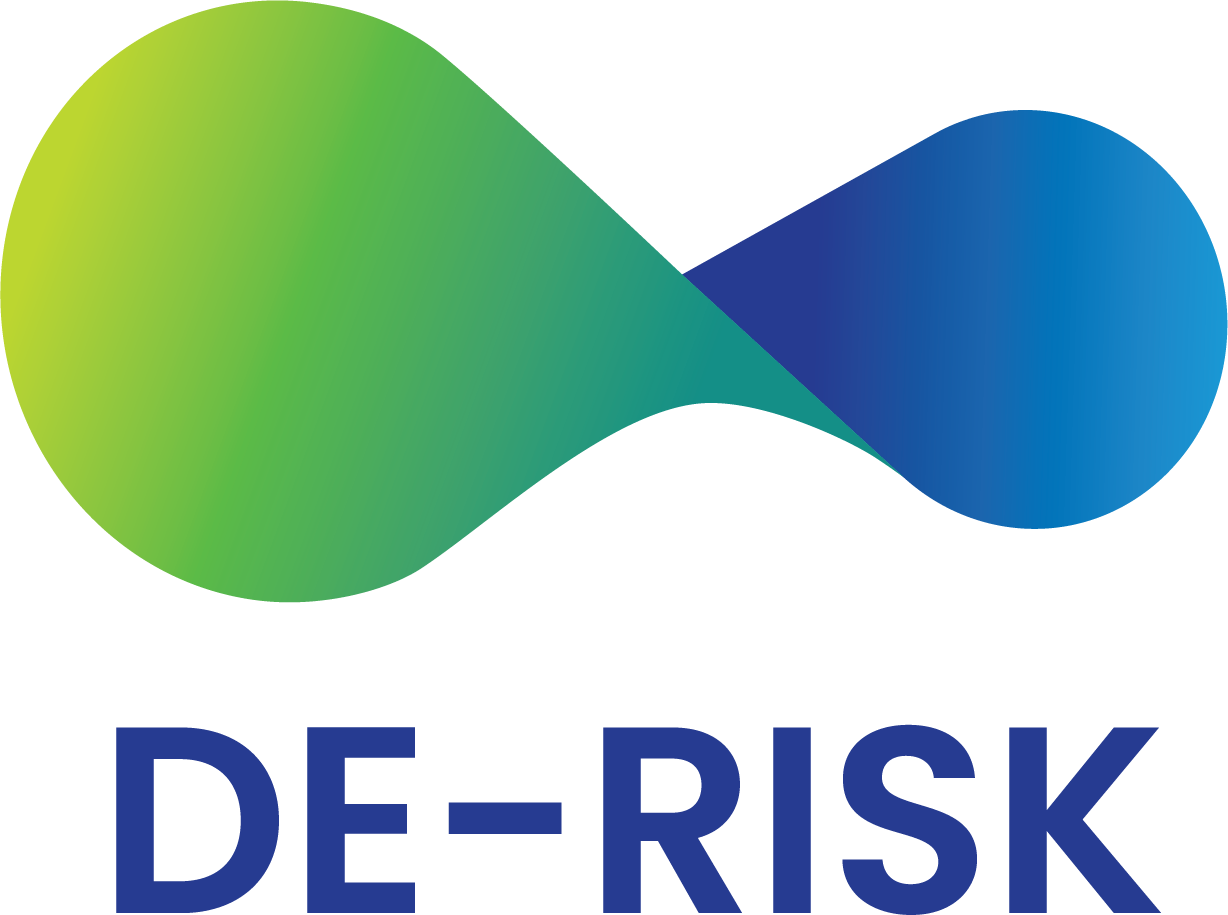
Partners

Who?
WG is one of the fast-growing, dynamic and successful global sustainable development consultancy company. WG works all over the world on technical assistance projects financed by international agencies, such as the EU, World Bank, UN, FCDO and etc. WEglobal emphasises excellence in research, capacity-building, stakeholder and citizen engagement through its projects in various regions of the world. It also brings innovation and technology and proposals for innovative platforms in project management, awareness-raising, event management, publicity and visibility. The company’s expertise lies in working with governments, NGOs, academia and the private sector to improve delivery of social services; advance education for all; protect the environment; fight climate change; support economic growth and employment; instil good governance; and promote justice and human rights.
WHAT IS THE ROLE OF PARTNER?
WG is the Project Coordinator of DE-RISK. WG will be in charge of ensuring the effective communication btw. partners and the EC, including reporting and liasing with the EC; setting up of project administration, internal communication and also quality management; assessment of progress in WPs, quality control of deliverables and keeping the track of milestones completion; and monitoring sceintific progress, data management and project finances as being the leader of WP1. The role of WG within the scope of WP6, as also being the WP leader, can be listed as defining and managing a clear and comprehensive plan for dissemination and exploitation of DE-RISK; creation of the Market Actors Communities; branding and promoting the project at local level in cooperation with local dissemination managers; and sharing and disseminating project results trough appropriate media and tools. WG is also responsible from the delivery of PESTLE Analysis & benchmarking of LFMS implementations with stakeholder mapping under WP3 and Report on community engagement best practices and social acceptability under WP4.
Partners

Website and Social Media Channels
Who?
QUE is an Athens, Greece based company founded in 2019 with the mission to deliver digital tools for greener and more affordable built environment and energy systems. QUE delivers solutions and digital tools that sit at the intersection of the construction, energy and ICT industries to drive the digital twin and green transition. QUE digital tools aim to re-invent building control by combining IoT, AI and distributed technologies into human-centric smart applications interacting with the neighborhood and the energy system in a Smart City ecosystem.
WHAT IS THE ROLE OF PARTNER?
The role of QUE in DE-RISK is to provide the ICT architecture and the DE-RISK technology tool suite that will be demonstrated in the DE-RISK pilot sites. DE-RISK technology tool suite encompasses different flexibility services enabling the implementation of demand response scenarios that will be tested in the DE-RISK pilot sites. QUE leads WP4 activities capturing the preparation phase of the pilot sites, the implementation in the pilot sites and the validation phase of the project.
Partners

Website and Social Media Channels
Who?
Troy is a non-profit organization that works to provide energy and climate education to citizens, local governments and communities to support local movements against climate change, develop policy relationships between energy communities and authorities, support and strengthen the energy transition in islands and small cities. and establishes living laboratories for them Troy has extensive experience in organizing seminars, trainings, roundtable discussions and workshops on different topics. Has strong ties with local communities, non-governmental organizations and municipalities in the Çanakkale region Troy is in contact with policy makers, ministries and local actors for policy making and lobbying Troy works with experts and academics for strategy planning, modeling of new roadmaps and local action plans and considering community work for the energy transition in European countries.
WHAT IS THE ROLE OF PARTNER?
Troya’s role in the DE-RISK project is to coordinate the case study in Turkey Troya will engage with the local in cross-collaboration with WP2 and organize a case study workshop with end users and stakeholders such as DSO Troya will begin with an analysis of existing measurement equipment and current data collection practices, followed by partners, information will identify gaps and determine where and what new measuring equipment should be installed. Gateways, smart meters and sensors will be installed at ‘critical’ points and will be configured from M6 where data is collected in all case studies Troya will also work with innovation partners to validate activities that unlock local resilience Data from case studies 1 year after installation of all equipment is complete. will be collected for “normal business” operation.
Partners

Website and Social Media Channels
Who?
UEDAŞ is a DSO Company in the Southern Marmara Region. It provides distribution services to 4 provinces, namely Balıkesir, Çanakkale, Bursa and Yalova in an area of more than 35,000 km2 . UEDAŞ provides its services with a total of 2,555 employees, of which 772 are permanent and 1,783 are contractors. 73% of the employees in the company are white collar and 27% are blue collar. 33% of the employees have bachelor’s degree or higher education level. 25% of the personnel is female and 75% is male. UEDAŞ has reached a total of over 3.5 million customers, of which over 28,000 are HV and more than 3.4 million are LV. As of the end of September 2022, almost 10 billion kWh of energy was distributed. A capacity of 11.7 million kVA was provided with more than 27,000 substations registered to the GIS. Over 39,000 km of air lines, over 13,000 km of underground lines, a total of 53,000 km of grid lines are serviced. There are a total of 580 active stations in the SCADA system and it is planned to build 50 more stations in 2023.
WHAT IS THE ROLE OF PARTNER?
The role of UEDAŞ is leading Turkish Case Study. UEDAŞ will be provider of DSOs’ business perspective and will install smart meters to 20 identified houses. UEDAŞ will collect electric consumption by smart meters and will analyze these data. Finally, UEDAŞ will share this information with DE-RISK partners in the online platform.
Partners

Website and Social Media Channels
Who?
The University of Galway is ranked Ireland’s #1 university for sustainable development in the Times Higher Education World Rankings (THE). University is not just about excellence in teaching; but also shaping a better world. The University of Galway’s commitment to sustainability is globally recognised, placing the university 38th worldwide and in the Top 10 in Europe (THE). As a government SDG Champion and a leader in sustainability, they offer a learning environment that cares for you and the planet.
The IRUSE research group focuses on developing concepts, methods and technology that underpin best practice sustainable & holistic lifecycle building management solutions. IRUSE research expertise includes the development of integrated building information modelling methodologies, tools and technologies with a particular emphasis on the domain of Energy & Buildings. IRUSE has also extensive experience in life cycle management of buildings, both in academic and industrial term, participating in some of the largest Irish government funded project in the area of optimised operation of buildings as well as several international and EU funded projects.
WHAT IS THE ROLE OF PARTNER?
The University of Galway manages the Irish pilot Aras de Brun Building, an academic facility, winner of the SEAI 2023 sustainability awards and recently retrofitted with PV production and Air to Water Heat Pump. The group will support the creation of business cases for the Irish market and the physical development of the pilot with the integration of the BMS backed data repository, sensoring equipment and data retrieval. The University will contribute to the scientific dissemination of the project as well as supporting the development of the different algorithms and models underpinning the local flexibility solutions for the pilot.
Partners

Website and Social Media Channels
Who?
NOVA IMS is a data science and information management faculty from the Nova University of Lisbon (UNL). His main research areas are information systems, data-driven marketing, data science and geoinformatics. NOVA IMS develops various projects on various topics such as energy, IT, information systems, privacy, smart cities and data science for education and health, among others.
WHAT IS THE ROLE OF PARTNER?
NOVA IMS’s (UNL) role in the DE-RISK project, coordinates work package 2, focusing on the role of the consumer in local flexibility markets. UNL will develop a model of consumer behavior that identifies the main motivations and barriers for citizens to engage in local energy solutions, as well as the perceived results from implementing these flexibility markets. This forms the basis for the development of a set of engagement strategies, recommendations and lessons learned, which will also be implemented on the architectural/technological side of the project.
Partners

Website and Social Media Channels
Who?
MIWENERGIA is an electricity retailer company focused on providing high added value services. Renewable energy technologies, electric vehicle, implementation of smart meters and the readiness of ICT, offer an opportunity to provide new services and generate new opportunities that go really further in utilities traditional business model. With that in mind the strategy of the company is to position itself as a service provider with innovative energy efficiency solutions.
MIWenergia is an SME located in Murcia and operates through the whole Spanish territory.
The company has several business activities as like the following:
– Electricity retailer, supplying power to a wide range of clients all over the Spanish market.
– Renewable Energy Generator. The company has developed solar installations for self-consumption to different clients
– Energy auditor. MyEnergia is an energy services supplier registered in the National Database.
– Provider of innovative solutions in energy efficiency field.
WHAT IS THE ROLE OF PARTNER?
MIWenergia is the reponsible of the Spanish pilot. This living lab involves 18 homes and 2 photovoltaic for collective-self-consumption plants. MIWenergia is also working in WP5, specifically in the task Local Flexibility markets stakeholders analysis. MIWenergia will support Ecrowd in the implementation of the Crowdfunding campaign in Spanish pilo. This campaign will fund the aquisition of a new PV plant and monitoring equipment for improving the collective energy and flexibility use.
Partners

Website and Social Media Channels
Who?
R2M Solution is an integrated and multi-disciplinary entrepreneurial innovation company that aggressively targets filling the gap between research activities and market implementation. R2M excels at helping companies grow and acts as an accelerator for bringing technologies and services to the market across the fields of Innovation Management, Engineering, Energy Services & Sustainability, and ICT/Automation. R2M is also an ESCO in Spain and Italy, with more than 1M€ in sales of innovative renewable energy sources (RES) products, and experience in over 15 EU Smart Grid projects.
WHAT IS THE ROLE OF PARTNER?
R2M’s role in DE-RISK is to lead the Exploitation activities, including the management of the project’s results, business modelling, analysis of the scalability and replicatibility potential of the DE-RISK’s innovative solutions and case studies across European cities, in order to maximise the impact and ensure a high market uptake of Local Flexibility Markets (LFMs). R2M is also involved in Project Management activities, supporting the coordinator, and coordinates the Data & Knowledge Management activities.
Partners

Website and Social Media Channels
Who?
SOFENA, which stands for Sofia Energy Agency, is a Bulgarian not-for-profit non-governmental organization founded in July 2001. It was drawn up under the European Union’s SAVE II program. Its founders are Sofia Municipality, the State Energy Efficiency Agency, and a number of other entities and representatives of scientific institutes, universities, consumers and business organizations. The organization assists local and national authorities in developing sustainable energy policies. It therefore works in collaboration with political decision-makers, municipalities, local communities and international partners as part of European projects, to establish and develop contacts with related organizations within and outside the EU for transferring of know-how and up-to-date technologies in the area of sustainability, energy efficiency, and ecology. It also provides assessments of energy consumption and of the potential of energy efficiency and renewable energy sources.
WHAT IS THE ROLE OF PARTNER?
The role of SOFENA in the De-Risk project is to analyze the regulation, policy and financial state of the art, as a leader of this Work package. The objectives are to analyze the Regulatory Impact Analysis in order to assess the existing regulatory framework, and to identify the pillars of action for the deployment of LFMs and potential flexibility services. This will provide an overview of the changing regulatory environment in the case study countries. SOFENA’s work will establish a framework for knowledge of LFMs but also levers for action to stimulate their development, leading to recommendations at different levels, to enable the introduction of LFM-related regulations.
Partners

Website and Social Media Channels
Who?
Ecrowd is a ESMA licensed European crowdfunding service provider (ECSP). Established in Barcelona in 2013, its platform is mainly focused to crowdlending campaigns for positive impact projects and sustainable economic activities.
Through Ecrowd’s platform, private organizations (companies, communities, schools, foundations…) request loans not to a bank but to a pool of thousands of individual investors that support their positive impact project or activity, environmental or social.
The function of Ecrowd is to communicate with the project owner, analyze its viability, market the project in the platform and manage loan installments. This way, Ecrowd has financed so far more than €9m in more than 180 collective loans for positive impact investments.
Ecrowd is also an active participant in H2020 projects such EENVEST or DE-RISK with its know-how in collective financing activities.
WHAT IS THE ROLE OF PARTNER?
Ecrowd has two main roles in DE-RISK as follows:
– Describe the current state of the art, available finance models, new financing trends, and specially the need for new financing instruments, and its fitting for LFM investments and related energy communities involved.
– Design and launch a crowdlending campaign for funding hardware for the DE-RISK Spanish pilot in Murcia to unleash and demonstrate the full potential of collective financing for LFMs and energy communities.
Partners

Website and Social Media Channels
Who?
GridPocket is a French software regulatory SME providing highly scalable behavioral value-added service platforms dedicated to energy management applications. GridPocket core technology includes behavioral approach, optimal UX and customizable UI, high-performance data processing and custom AI applications dedicated to energy to engage customers.
WHAT IS THE ROLE OF PARTNER?
The role of GridPocket in DE-RISK is to adapt its energy management platform to engage DE-RISK users in Local Flexibility Markets. GridPocket will also partcipate to the project as a pilot partner, testing the DE-RISK methodology on households located in the south of France.
